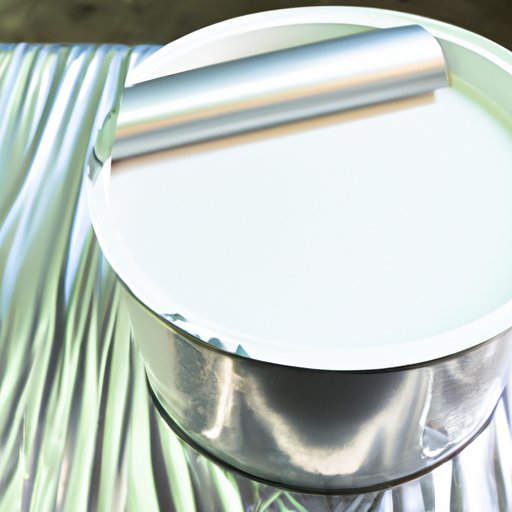Introduction
Painting aluminum may seem daunting, but it doesn’t have to be. With the right supplies and technique, anyone can create an attractive and durable paint job on aluminum surfaces. This article will explain how to prepare the surface, select the right paint, and apply the paint for a professional-looking finish.
Use a High-Quality Primer to Prepare the Aluminum Surface
The first step in painting aluminum is to prepare the surface. The best way to do this is to use a high-quality primer. Primer helps the paint to adhere to the aluminum, creating a stronger bond and more even coverage. It also helps protect the aluminum from corrosion and other damage.
When choosing a primer, look for one that is specifically designed for use on metal surfaces. Oil-based primers are generally the best choice as they provide superior adhesion and durability. However, if you’re looking for an environmentally friendly option, there are water-based primers available as well.
Select Appropriate Paint for the Aluminum
Once the primer has been applied, it’s time to choose the right paint for the job. When selecting paint, consider the type of finish you want to achieve. For example, if you’re looking for a glossy finish, an enamel paint is the best option. If you prefer a matte finish, an acrylic paint is a better choice.
It’s also important to consider the environment where the aluminum will be located. For outdoor applications, look for a paint that is rated for exterior use and offers UV protection. For indoor applications, choose a paint that is rated for interior use and offers mildew resistance.
Sand the Aluminum to Create an Even Surface
Once the primer and paint have been selected, it’s time to prepare the aluminum for painting. The best way to do this is to sand the surface to create an even, smooth finish. Start with a coarse grit sandpaper (around 120 grit) and work your way up to a finer grit (around 220 grit). Be sure to use a circular motion while sanding to avoid creating any grooves or scratches.
Once the surface is smooth, use a damp cloth to remove any dust or debris. This will help ensure that the paint adheres properly to the aluminum.
Clean the Aluminum before Painting
Before applying the paint, it’s important to thoroughly clean the aluminum. This will remove any dirt, grease, or other contaminants that could interfere with the paint’s adhesion. Use a degreaser or all-purpose cleaner to remove any stubborn spots, then rinse with water and allow the surface to dry completely.

Apply the First Coat of Paint
Once the aluminum is clean and dry, it’s time to apply the first coat of paint. Before doing so, make sure the area is well ventilated and that you are wearing protective gear, such as gloves and a mask. Also, be sure to stir the paint thoroughly to ensure an even distribution of color and texture.
Using a paintbrush or roller, apply the paint in long, even strokes. Make sure to cover the entire surface, including any corners or crevices. Allow the first coat to dry completely before applying a second coat.

Allow the First Coat of Paint to Dry
Depending on the type of paint you’ve chosen, it may take anywhere from two to four hours for the first coat of paint to dry. To check if the paint is dry, lightly touch it with your finger. If it feels dry, it is ready for a second coat. If not, wait a few more hours before applying a second coat.

Apply a Second Coat of Paint as Necessary
If the first coat of paint looks uneven or patchy, it may be necessary to apply a second coat. To do this, follow the same steps as before, making sure to stir the paint thoroughly and apply it in long, even strokes. Allow the second coat to dry completely before moving on to the next step.
Conclusion
Painting aluminum is a relatively simple process when done correctly. With the right supplies and technique, anyone can create a beautiful and durable paint job on aluminum surfaces. Be sure to use a high-quality primer, select the appropriate paint, sand the surface, clean the aluminum, and apply multiple coats of paint as necessary.
By following these steps, you can create a professional-looking finish on any aluminum surface. Good luck!

